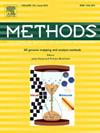KRN-DTI: Towards accurate drug-target interaction prediction with Kolmogorov-Arnold and residual networks
IF 4.3
3区 生物学
Q1 BIOCHEMICAL RESEARCH METHODS
引用次数: 0
Abstract
Predicting drug-target interactions (DTIs) accurately is essential in the field of drug discovery. Recently, artificial intelligence (AI) technologies, especially graph convolutional networks (GCNs), have been developed to tackle this challenge. However, as the number of GCN layers increases, models may lose critical information due to excessive smoothing. Moreover, these methods often lack interpretability and are dependent on specific datasets, which limits their generalizability. Consequently, this study introduces a novel method, KRN-DTI, which employs interpretable GCN technology to predict DTIs based on a drug-target heterogeneous network. The method uses GCN technology to identify potential DTIs by leveraging known interactions and dynamically adjusting the weights, thereby enhancing the model's interpretability. Additionally, residual connection technology is employed to integrate GNN outputs, mitigating the over-smoothing issue. Furthermore, the model's interpretability is enhanced by adaptively adjusting weights using Kolmogorov–Arnold Networks (KAN) and attention mechanisms. Experimental results show that KRN-DTI outperforms several advanced computational methods on the benchmark dataset. Case studies further highlight the effectiveness of KRN-DTI in predicting potential DTIs, showcasing its potential for real-world applications in drug discovery. Our code and data are publicly accessible at: https://github.com/lizhen5000/KRN-DTI.git.
KRN-DTI:基于Kolmogorov-Arnold和残差网络的药物-靶标相互作用准确预测
准确预测药物-靶标相互作用(DTIs)在药物发现领域至关重要。最近,人工智能(AI)技术,特别是图卷积网络(GCNs),已经被开发出来应对这一挑战。然而,随着GCN层数的增加,模型可能会因为过度平滑而丢失关键信息。此外,这些方法往往缺乏可解释性,并且依赖于特定的数据集,这限制了它们的泛化性。因此,本研究引入了一种新的方法,KRN-DTI,该方法采用可解释的GCN技术来预测基于药物靶点异构网络的dti。该方法利用GCN技术,通过利用已知的相互作用和动态调整权重来识别潜在的dti,从而提高模型的可解释性。此外,采用剩余连接技术对GNN输出进行积分,减轻了过度平滑问题。此外,通过使用Kolmogorov-Arnold网络(KAN)和注意机制自适应调整权重,增强了模型的可解释性。实验结果表明,KRN-DTI在基准数据集上的性能优于几种先进的计算方法。案例研究进一步强调了KRN-DTI在预测潜在dti方面的有效性,展示了其在药物发现中的实际应用潜力。我们的代码和数据可以在https://github.com/lizhen5000/KRN-DTI.git公开访问。
本文章由计算机程序翻译,如有差异,请以英文原文为准。
求助全文
约1分钟内获得全文
求助全文
来源期刊

Methods
生物-生化研究方法
CiteScore
9.80
自引率
2.10%
发文量
222
审稿时长
11.3 weeks
期刊介绍:
Methods focuses on rapidly developing techniques in the experimental biological and medical sciences.
Each topical issue, organized by a guest editor who is an expert in the area covered, consists solely of invited quality articles by specialist authors, many of them reviews. Issues are devoted to specific technical approaches with emphasis on clear detailed descriptions of protocols that allow them to be reproduced easily. The background information provided enables researchers to understand the principles underlying the methods; other helpful sections include comparisons of alternative methods giving the advantages and disadvantages of particular methods, guidance on avoiding potential pitfalls, and suggestions for troubleshooting.
 求助内容:
求助内容: 应助结果提醒方式:
应助结果提醒方式:


